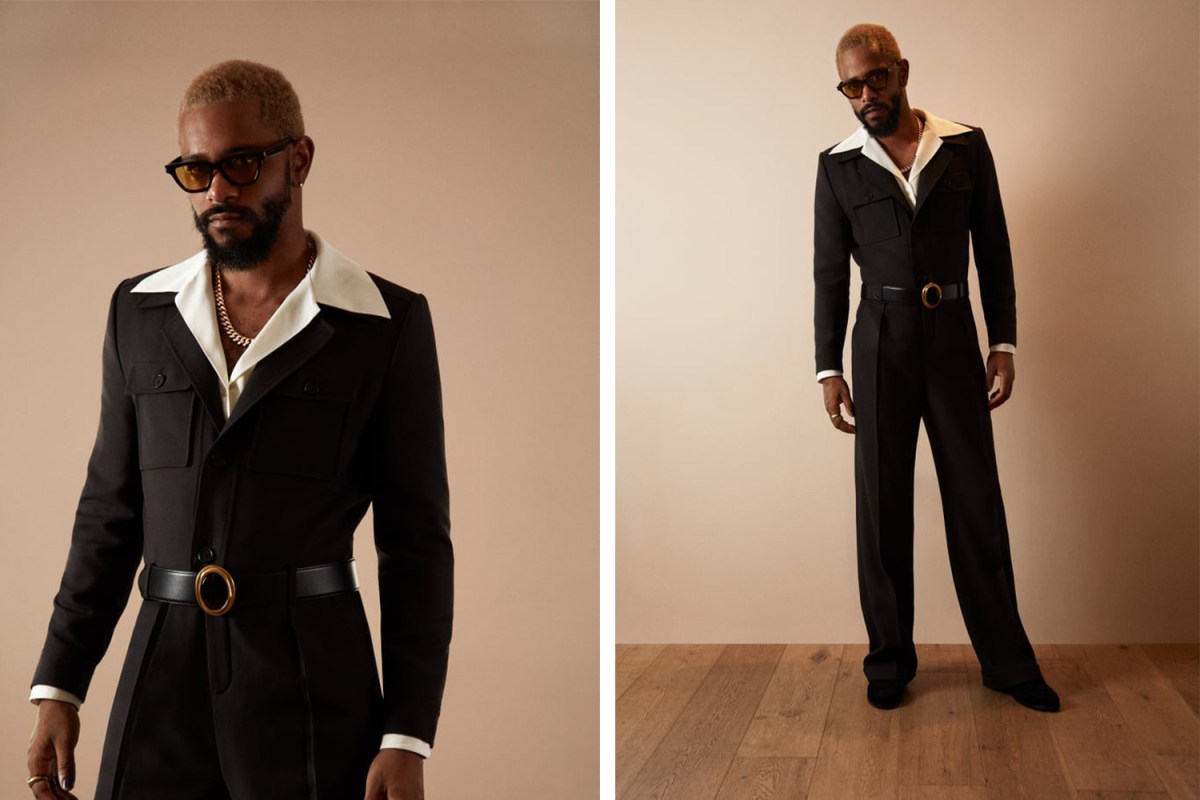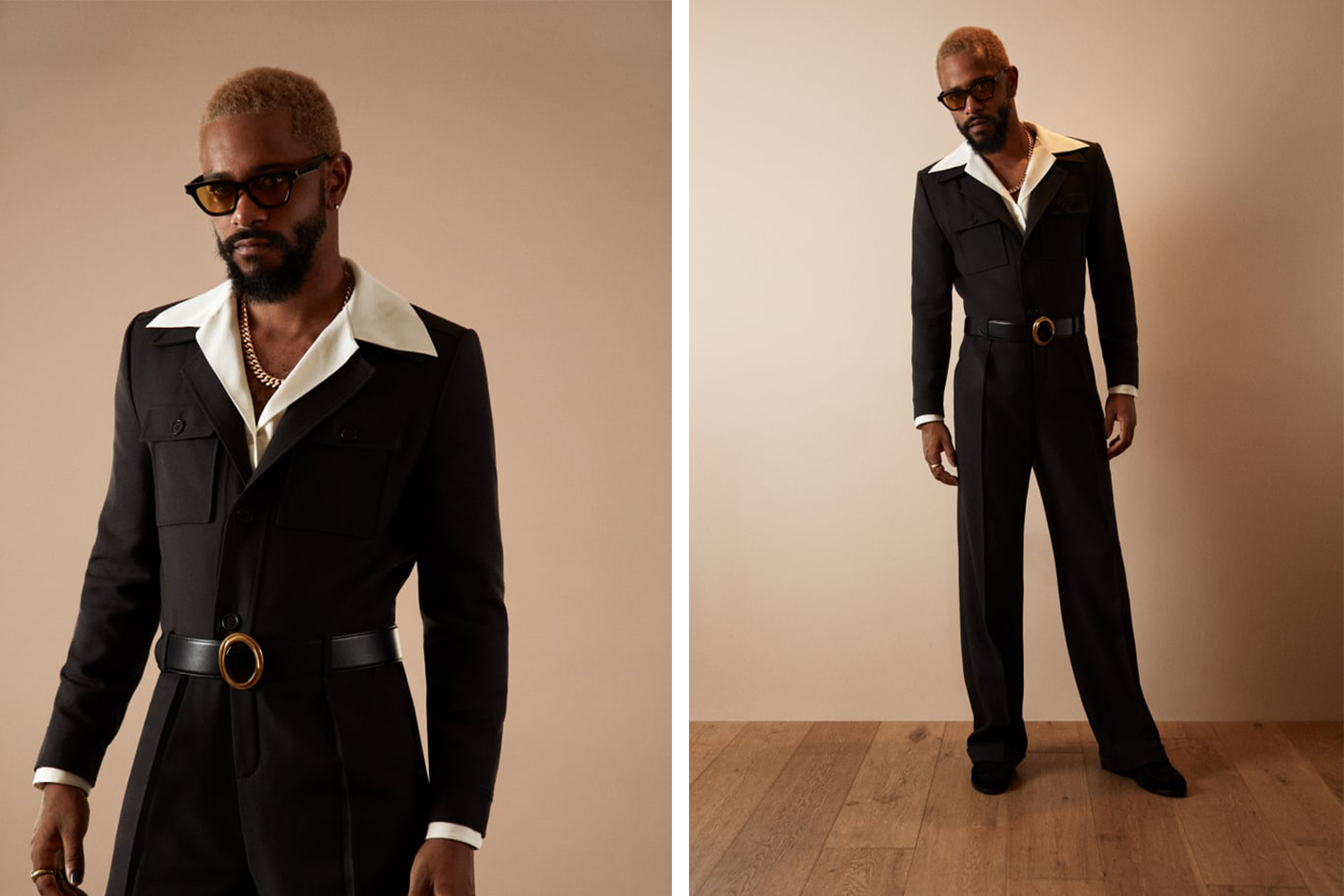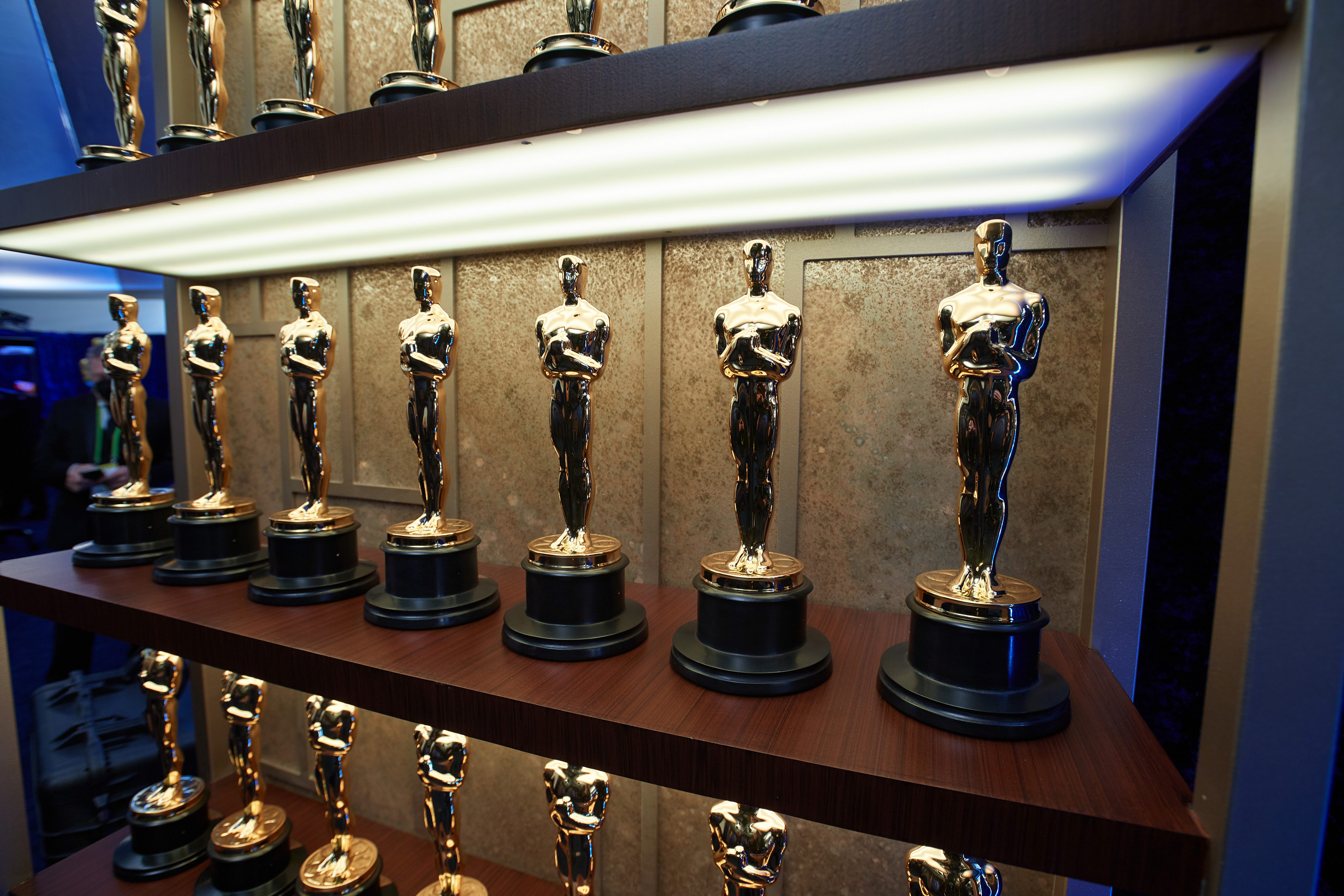Lakeith Stanfield always understands the assignment. The Best Supporting Actor nominee arrived to the 93rd Academy Awards looking every bit a 1970s dream in a Saint Laurent by Anthony Vaccarello jumpsuit, complete with dagger collar, exaggerated lapels, voluminous pant legs and a belted waist. It was fun, unexpected, subversive and true to Stanfield’s ethos of non-traditional red carpet dressing, all while adhering to the confusing guidelines of the event’s dress code.
Prior to the event, the show’s producers sent out an email to nominees dictating protocol regarding a number of things, from mask regulations to Zooming into the ceremony. But the strangest part of the letter was the producers’ suggestion regarding the dress code, which read, “We’re aiming for a fusion of Inspirational and Aspirational.” In other words, formal is totally cool if you want to go there, but casual really is not.”
We were all witness to the effects the previous year had on our wardrobes and approach to dressing, seen largely in the proliferation of sweatpants and all manner of loungewear, but for the producers of the show to think this mode of leisurely dressing would be on display at what is considered the most important awards ceremony, and were so concerned as to passive-aggressively suggest the show’s attendees not dress in casual attire, seemed unnecessary. While other recent awards shows have seen instances of actors forgoing black tie altogether in favor of the informal — namely Jason Sudeikis in a tie-dye hoodie virtually attending the Golden Globes — they’ve been few and far between, with suits and tuxedos still largely the norm. And considering the reverence paid to the Oscar’s red carpet, chances of anyone arriving in sweatpants were little to none. After all, remember the largely adverse reaction caused by Timothée Chalamet’s satin Prada tracksuit at last year’s ceremony?
But for the producers to request “a fusion of Inspirational and Aspirational” dressing while in the same breath denying attendees essentially the opportunity to experiment with the looks they present was unfair, and whatever they’d hoped to achieve with the directive resulted in the usual dominance of black tuxes — handsome, yes, but sources of inspiration and aspiration? Hardly.
But then there was Lakeith Stanfield, who still managed to look formal despite wearing a jumpsuit, all while offering something that’s never been seen on the Oscars red carpet before. As Vogue‘s fashion news editor Steff Yotka pointed out on Twitter, Stanfield’s outfit was actually inspired by a women’s look from the Saint Laurent Spring 2021 collection, keeping the same safari-inspired silhouette (the upper half especially reminiscent of Saint Laurent’s iconic safari jackets) while adding a white shirt underneath and circular belt buckle. Even without knowing the reference it made, there’s still something inherently feminine to the look, particularly in its slinky sexiness, largely attributed to the more shapely figure it creates, which further works to create a sense of androgyny. In recent years the Oscars has witnessed its fair share of gender-fluid looks, but where Stanfield’s differs is the subtlety and almost off-handedness with which he presents it, so evidently at ease in what he’s wearing that it reads more as an afterthought and less of a statement. Not only did Stanfield’s look immediately join the ranks of the ceremony’s best dressed, it offered a glimpse of what the future of men’s red carpets could and should be.
This article was featured in the InsideHook newsletter. Sign up now.

















